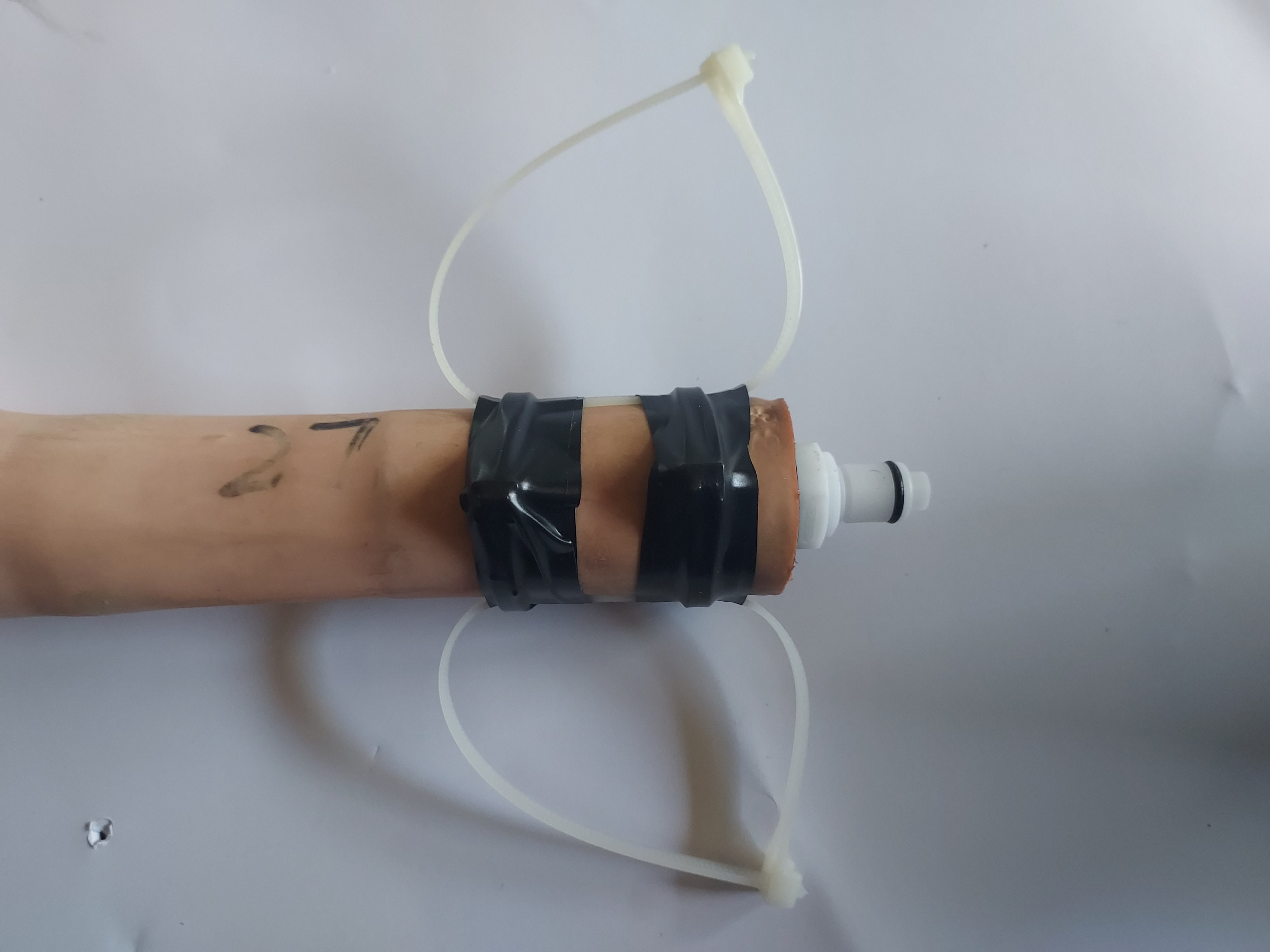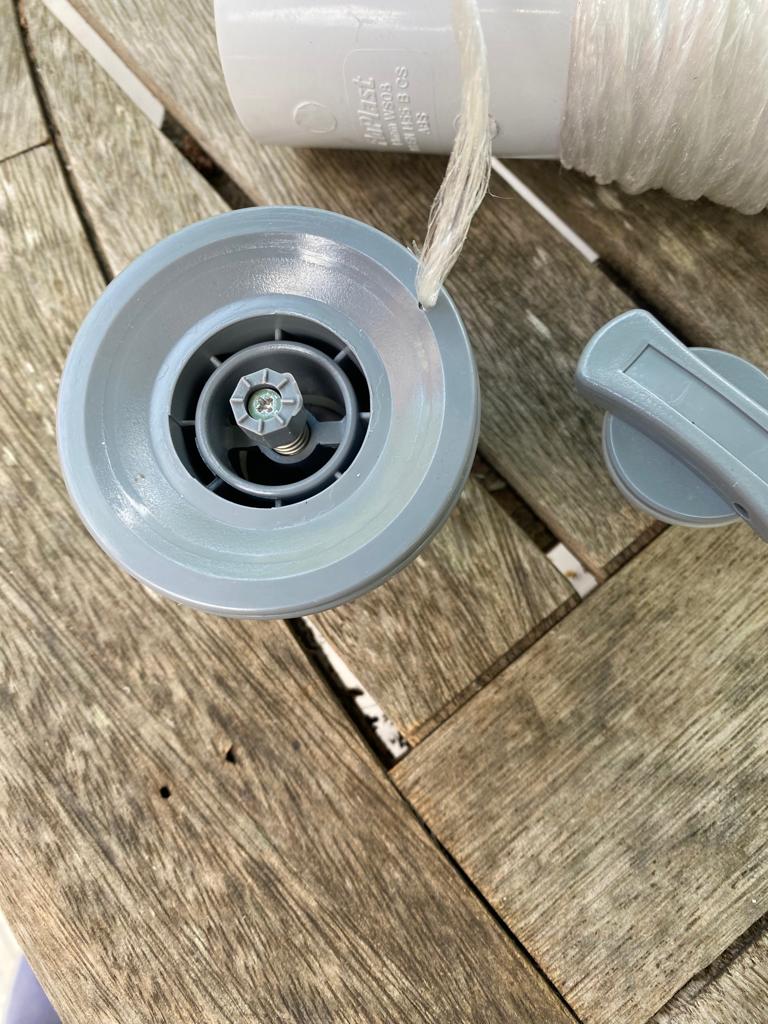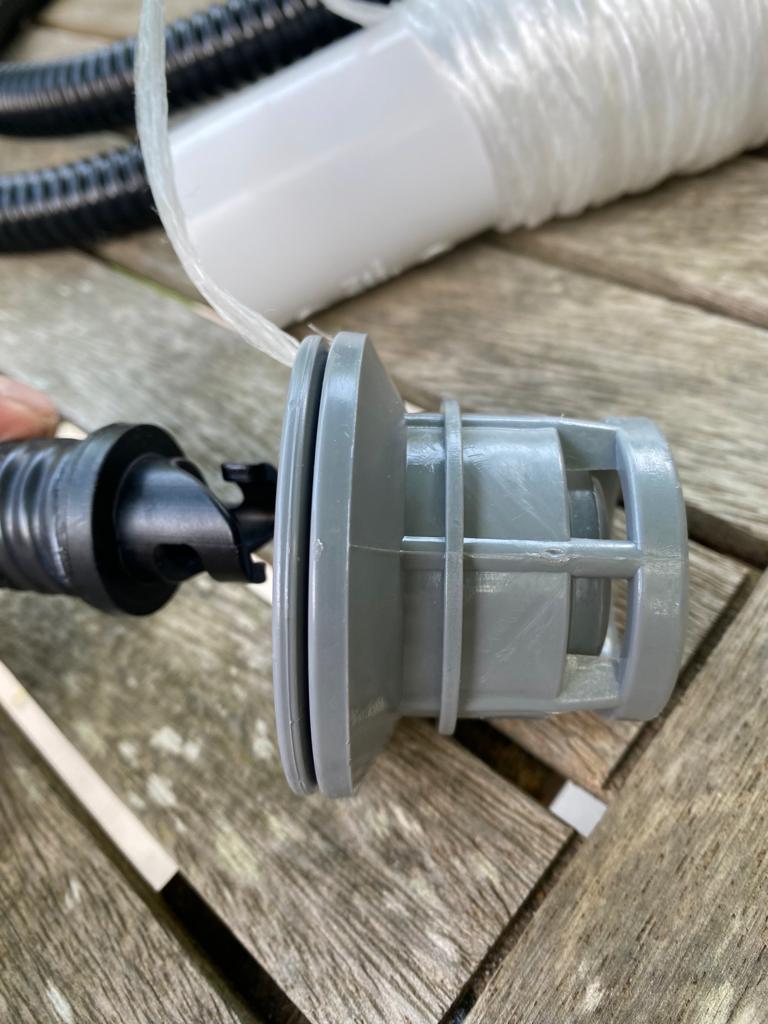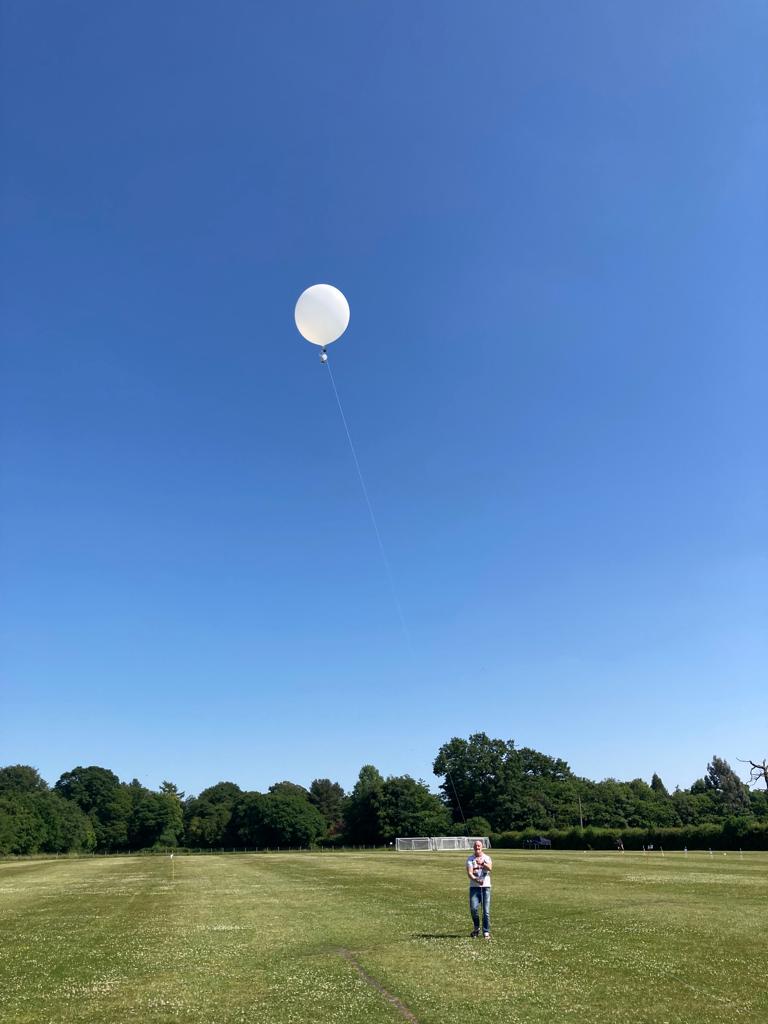Balloon Burst
Sasha Tim
John Laidler
--
You received this message because you are subscribed to the Google Groups "UKHAS" group.
To unsubscribe from this group and stop receiving emails from it, send an email to ukhas+un...@googlegroups.com.
To view this discussion on the web visit https://groups.google.com/d/msgid/ukhas/CADS7kXWTF6RPxnW0vm%3D3D-pLGiHgUWdVaf8qS%3DgYjAFTJr8YTw%40mail.gmail.com.
Steve
Use one of the burst calculators and aim for 5m/sec ascent rate -
e.g. https://sondehub.org/calc/ - less than about 3.5m/sec is
float territory.
Pre-calculate how much helium you will need and make sure you
bring a cylinder with more than enough. Also be sure of the
purity of the gas you have obtained - there are quite a few
diluted Heliums around.
Don't skimp on gas and don't be worried about overfill - add a few extra squirts of gas if needed to be sure (traditionally measured in Stirks).
When you fill the balloon make sure it has the required neck lift and your not being fooled by the wind. Make sure the test weight is lifted continuously off the ground.
Steve G8KHW
--
You received this message because you are subscribed to the Google Groups "UKHAS" group.
To unsubscribe from this group and stop receiving emails from it, send an email to ukhas+un...@googlegroups.com.
To view this discussion on the web visit https://groups.google.com/d/msgid/ukhas/CADS7kXWTF6RPxnW0vm%3D3D-pLGiHgUWdVaf8qS%3DgYjAFTJr8YTw%40mail.gmail.com.
Mike Sharps
--
Mark Jessop
To view this discussion on the web visit https://groups.google.com/d/msgid/ukhas/CACk6KX4tjYkcNbjQAqmx6%2B9W88itY1yOPCY7ebawobd94sd7kQ%40mail.gmail.com.
Shivaram S P
David Akerman
To view this discussion on the web visit https://groups.google.com/d/msgid/ukhas/f59feb54-a169-46f4-a53c-6e45fad8b380n%40googlegroups.com.
Steve
" weight keeps fluctuating in the machine" sounds like you are
using some form of lift scales? - and not the test weight
suggested.
In my view the test weight is easier to use in the wind as you
are not trying to mentally average a reading.
The professionals (weather services etc.) use purpose built buildings in which to inflate the balloon and measure lift out of the wind - the buildings have large doors through which to exit the balloon. Some go so far as to have doors on all 4 sides of the building so you can always exit downwind.
Failing that, fill and launch on the leeward side of a building or other obstruction such as tall trees. Where that's not possible I've gone so far as to build a windbreak (middle of Dartmoor):
https://www.youtube.com/watch?v=z1z3z2S18Co
Some groups have gone even further and use a gas flow meter to measure the amount of gas fill - and fill under a bag:-
https://www.youtube.com/watch?v=khmw7tsiZ-8
You can also roughly measure the amount of gas used by the
pressure drop method.
IMO The test weight method is more accurate in low wind conditions - the gas flow meter and pressure drop methods of measuring fill (and hence lift) might be more applicable to windy conditions.
Steve
To view this discussion on the web visit https://groups.google.com/d/msgid/ukhas/f59feb54-a169-46f4-a53c-6e45fad8b380n%40googlegroups.com.
Mark Goergen



As the chaps at Cambridge found out, it can be a bit hit and miss… too much and it bursts too soon, and if you under inflate it, it becomes a floater and you can say bye-bye. So, the challenge is to get an accurate(ish) 5m/s rate of ascent. Fortunately, being a genius(😂), I have devised a cunning plan!…
An air valve for an inflatable boat/kayak that goes inside the neck of the balloon and cable-tied to provide a tight seal. I got one with a small collar so the cable tie can’t slip). The valve is a simple ‘press valve’ so I got 3m of flexible hose and a foot pump connector and put them together…So, once connected to the helium cannister we can fill as required…
To check we’ve fot the right ascent rate, the water bottle ‘payload can be reduced by the weight of the valve and we can then disconnect the black hose and release the balloon on a tether (attached to the valve) and time the ascent. I’ve measured out a 40m lightweight nylon tether so at full extend it should be about 8 seconds. If we need to add some helium then we just attach the black hose and keep filling, however crucially, if we need to remove some helium, then we just press the valve in to let it escape.once we’re happy with the rate, the neck can be sealed further up than the valve, payload attached, valve can then be removed and away we go, confident we have the correct rate of ascent. And of course, the valve is reusable, so I made a nifty little storage/winder thingy.Anyway… it seemed to work pretty well
To view this discussion on the web visit https://groups.google.com/d/msgid/ukhas/d05a6683-7eb7-45ec-a3c2-840aeb145f15n%40googlegroups.com.
noddym


 As the chaps at Cambridge found out, it can be a bit hit and miss… too much and it bursts too soon, and if you under inflate it, it becomes a floater and you can say bye-bye. So, the challenge is to get an accurate(ish) 5m/s rate of ascent. Using the principle of ‘keeping it simple’, we devised a cunning plan!…
As the chaps at Cambridge found out, it can be a bit hit and miss… too much and it bursts too soon, and if you under inflate it, it becomes a floater and you can say bye-bye. So, the challenge is to get an accurate(ish) 5m/s rate of ascent. Using the principle of ‘keeping it simple’, we devised a cunning plan!…An air valve for an inflatable boat/kayak that goes inside the neck of the balloon and is cable-tied to provide a tight seal (I got one with a small collar so the cable tie can’t slip). The valve is a simple ‘press valve’ so I got 3m of flexible hose and a foot pump connector and put them together…
Steve
Nice double check on ascent rate - should be OK in light winds - but in medium/strong winds your need to run (like the wind) to keep under the balloon.
Steve
As the chaps at Cambridge found out, it can be a bit hit and miss… too much and it bursts too soon, and if you under inflate it, it becomes a floater and you can say bye-bye. So, the challenge is to get an accurate(ish) 5m/s rate of ascent. Fortunately, being a genius(😂), I have devised a cunning plan!…
An air valve for an inflatable boat/kayak that goes inside the neck of the balloon and cable-tied to provide a tight seal. I got one with a small collar so the cable tie can’t slip). The valve is a simple ‘press valve’ so I got 3m of flexible hose and a foot pump connector and put them together…
So, once connected to the helium cannister we can fill as required…
To check we’ve fot the right ascent rate, the water bottle ‘payload can be reduced by the weight of the valve and we can then disconnect the black hose and release the balloon on a tether (attached to the valve) and time the ascent. I’ve measured out a 40m lightweight nylon tether so at full extend it should be about 8 seconds. If we need to add some helium then we just attach the black hose and keep filling, however crucially, if we need to remove some helium, then we just press the valve in to let it escape.once we’re happy with the rate, the neck can be sealed further up than the valve, payload attached, valve can then be removed and away we go, confident we have the correct rate of ascent. And of course, the valve is reusable, so I made a nifty little storage/winder thingy.
Anyway… it seemed to work pretty well
On Saturday, August 5, 2023 at 11:08:55 AM UTC+1 G8KHW wrote:
To view this discussion on the web visit https://groups.google.com/d/msgid/ukhas/d05a6683-7eb7-45ec-a3c2-840aeb145f15n%40googlegroups.com.
Steve
challenging.
De-reelers seem to be the answer for windy conditions.
Steve
On 05/08/2023 12:46, Mark Goergen wrote:
> We generally avoid launching above 4 m/sec wind speed.
This email has been checked for viruses by AVG antivirus software.
www.avg.com


